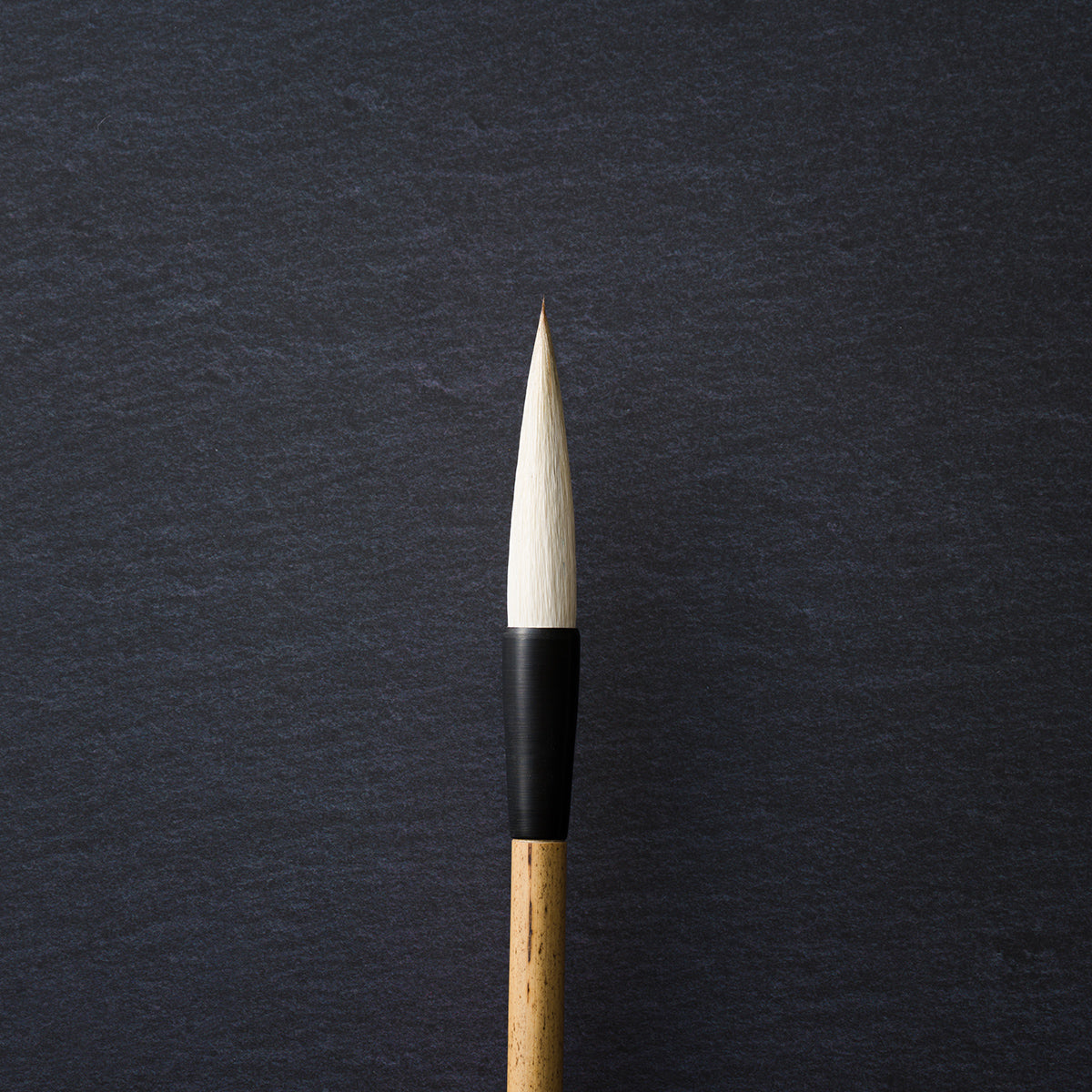rimpamura
【HANKEIDO】Calligraphy brush - KENGO FUDE
【HANKEIDO】Calligraphy brush - KENGO FUDE
Kengo brushes made by HANKEIDO, with 400 years of tradition and expertise since its establishment in the first year of the Genwa era.
The brush made of carefully blended wool, horse, and raccoon hair, provides a resilience and excellent ink absorbency. Suitable for all writing styles, including regular script, running script, and cursive script.
<Product details>
SIZE (shaft diameter x length of brush hair)
XL φ15.4mm×66.5mm 1 line sheet of HANSETSU
L φ11.5mm×59mm 2 characters in a sheet of HANSHI
M φ11.2mm×54.5mm 2~4 characters in a sheet of HANSHI
S φ10.2mm×50mm 4~6 characters in a sheet of HANSHI
*HANSHI (about 24.3×33.4cm)
*HANSETSU(about 34.5×136cm)
MATERIAL:goat, Amao (hourse), raccoon
SET includes brushes of each size (XL, L, M, S)
Couldn't load pickup availability
Share


筆 from 攀桂堂 Hankeido
"Yūshin-fude refers to a type of brush pen where hairs are wrapped with Japanese WASHI paper around a core and then topped with additional hairs.
All 18 types of the oldest brushes preserved in the Shōsōin (Imperial Repository) from the eighth-century Heian period in Japan are of the yūshin-fude type, and they represent the most ancient form of brushes that still exist today.
筆 fude from Hankeido
-
【HANKEIDO】SUMIE FUDE for Sumie paintings
Regular price From $27.00Regular priceUnit price / per -
【HANKEIDO】Maki Fude - RYUTOMAKI FUDE in a paulownia box.
Regular price From $112.00Regular priceUnit price / per -
【HANKEIDO】Maki Fude - Jakuto Fude (Sparrow-Head Brush)
Regular price From $29.00Regular priceUnit price / per -
【HANKEIDO】AMAO Tanpo Fude: highly recommended for ENSO writing
Regular price From $38.00Regular priceUnit price / per -
【HANKEIDO】Calligraphy brush - KENGO FUDE
Regular price From $27.00Regular priceUnit price / per -
rimpamura Original: The Beauty of Lines - Premium Fine Hair Drawing Brush Set -
Regular price $59.00Regular priceUnit price / per -
【HANKEIDO】Calligraphy brush - NUKINA SUOH
Regular price From $29.00Regular priceUnit price / per -
【HANKEIDO】Maki Fude - TENPYO FUDE, suitable for copying sutras
Regular price From $92.00Regular priceUnit price / per -
【HANKEIDO】Maki Fude - SHIBIEN
Regular price $35.00Regular priceUnit price / per -
【HANKEIDO】Calligraphy brush - Kana Fude selction
Regular price From $14.00Regular priceUnit price / per












